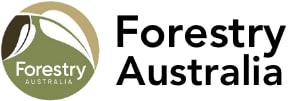
Key principles to understanding prescribed burning
MEDIA RELEASE
16 January, 2020
Peak body for forest managers and growers releases key principles to understanding prescribed burning as a land management tool for bushfire mitigation (also known as hazard reduction burning, control burning and fuel reduction, amongst other names)
With the devastating bushfires continuing, the peak body for forest managers – the Institute of Foresters, which is made up of some 1,200 forest and land management professionals and practitioners Australia wide and the Australian Forest Growers have released six key principles to understanding the need for prescribed burning as a key tool in managing bushfires.
President of the Institute of Foresters, Mr Bob Gordon said we have released the principles to ensure there was an informed debate on how the nation’s forests are managed.
“Our members, who are asked every day to manage the landscape, have highlighted that any discussion of future forest and fire management must have prescribed burning as part of the solution to controlling bushfires,” Mr Gordon said.
He also noted that some people confuse prescribed burning with back burning. He said, “prescribed burning is used before bushfires occur to reduce environmental impacts and aid suppression while backburning is used as a bushfire control tactic.”
“While prescribed burning is not the panacea for our bushfire problem, fire as a landscape management tool has for thousands of years been part of the Australian environment and properly managed will significantly mitigate our bushfire problems. This is becoming even more critical in the face of climate change impacting on bushfire severity and extent”
Mr Gordon said to ensure informed debate on the matter the Institute of Foresters, including Australian Forest Growers had adopted the following five key principals.
“The first principle is that fire as a management tool of the landscape has been used since ancient times in Australia and it remains a key tool in the face of climate change,” Mr Gordon said.
“Since ancient times, indigenous Australians have used fire to shape the landscape. More recently, the forestry profession has pioneered, and developed landscape-scale prescribed burning as a bushfire mitigation tool”.
“Secondly, while nothing will stop intense bushfires, prescribed burning will significantly mitigate them.
“Not even the biggest water-bombing aircraft can stop a major bushfire in extreme weather, so neither can a prescribed burn, but history shows it can help.
Mr Gordon said thirdly, reducing fuel levels through prescribed burns enables fire-fighters to control fire quicker and reduce the amount of land burned.
“Many of the huge fires we are now experiencing were initially burning under mild conditions, so had the fuel load been reduced it would have assisted fire-fighters to control them before the on-set of dangerous fire weather conditions which has made them uncontrollable.
“Fourthly bushfires will still burn, but reduced fuel levels will reduce environmental impact. Put simply, less fuel, means less fire.”
Mr Gordon said the fifth principle accepts that prescribed burning is not the perfect solution, but over time has been shown to be beneficial.
“The bottom line is that forest and land managers understand fire is a vital tool in managing bushfire and we must understand this if we are to have a proper debate on the matter.
“Finally, the IFA supports the use of fire in northern Australia, particularly by indigenous Australians for sustainable forest management including carbon emission reduction, forest health and ecological values.
END
Media Contact:
Becher Townshend
Font PR
0418 370 661

